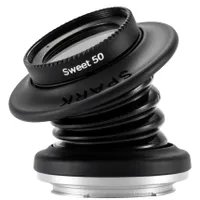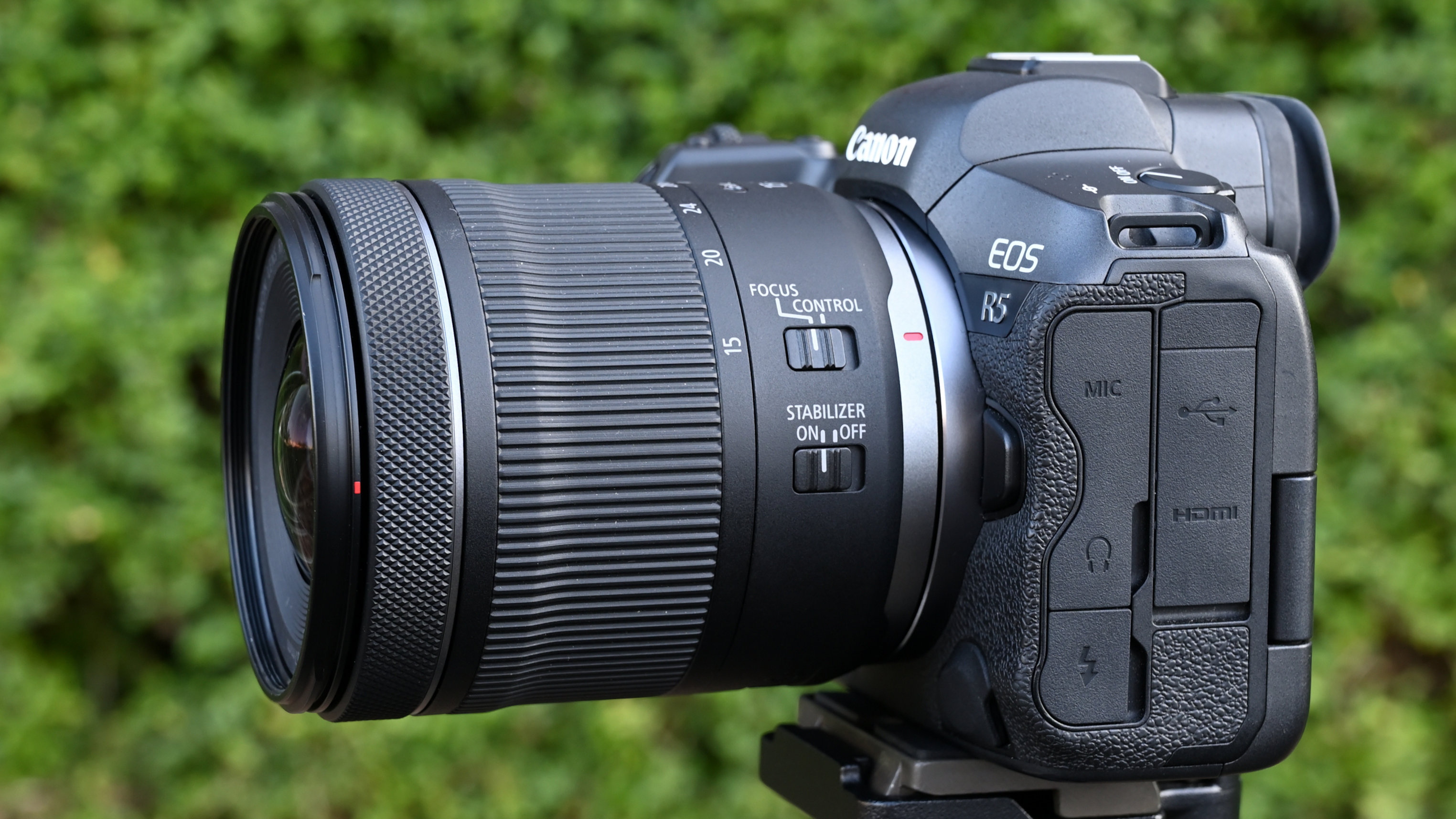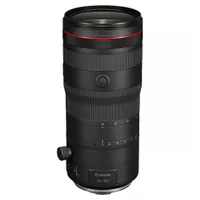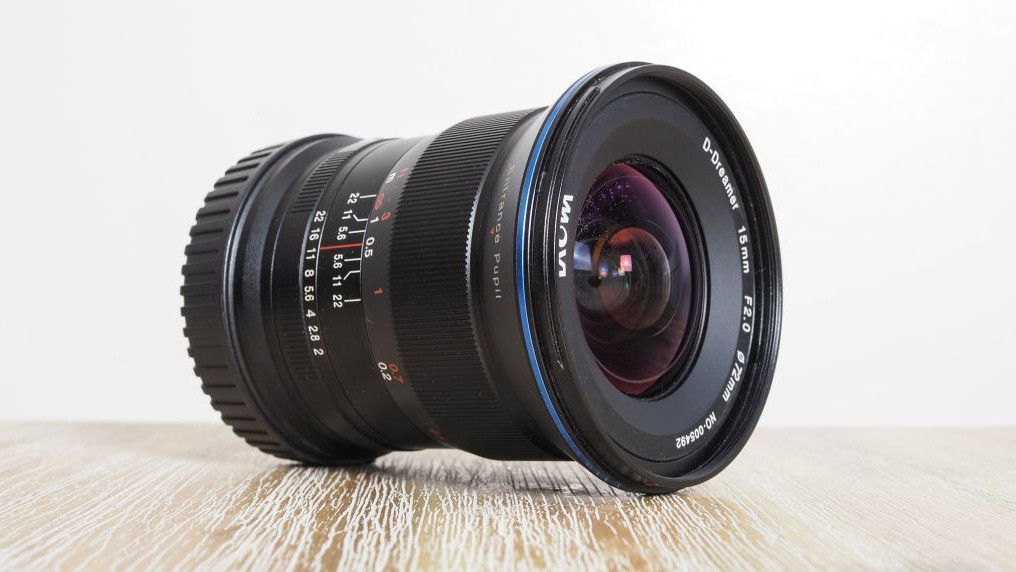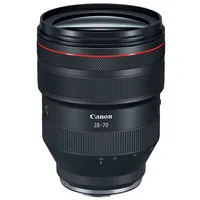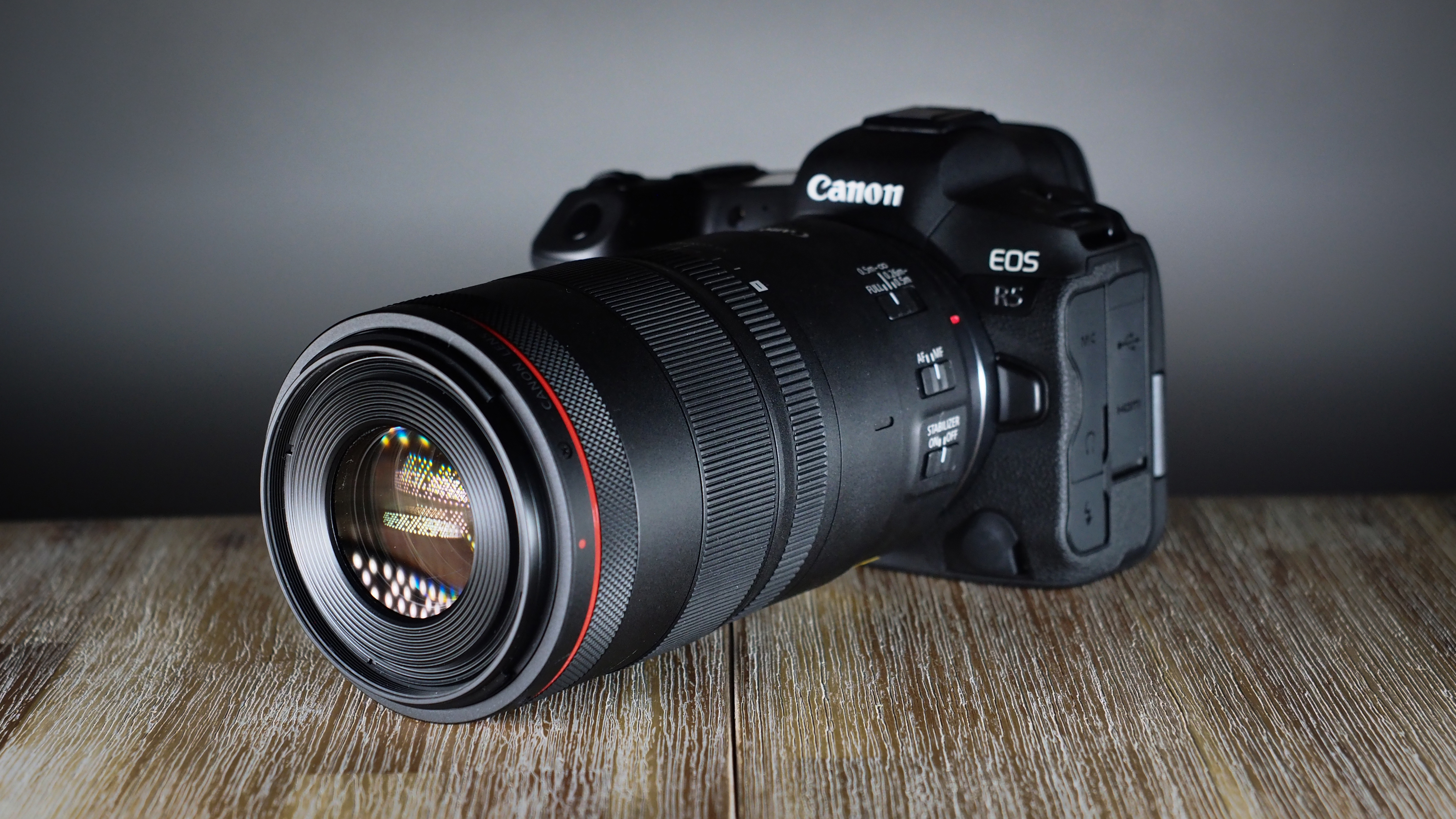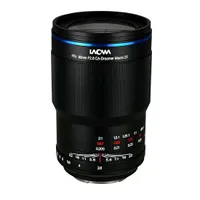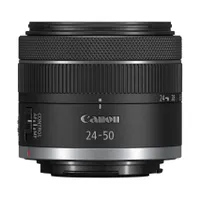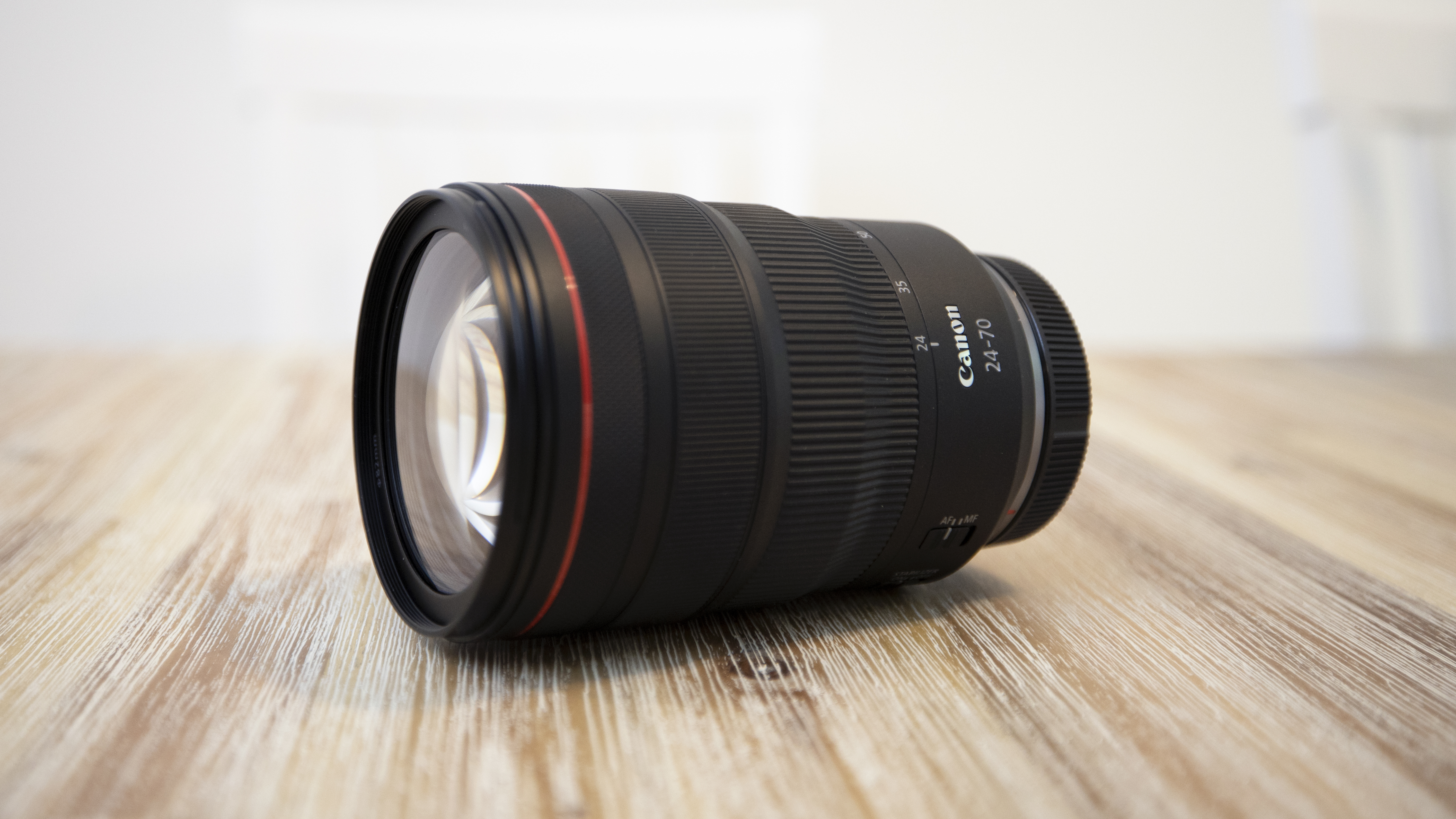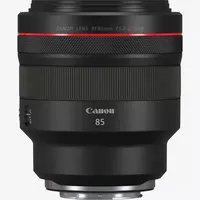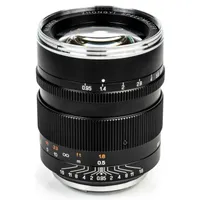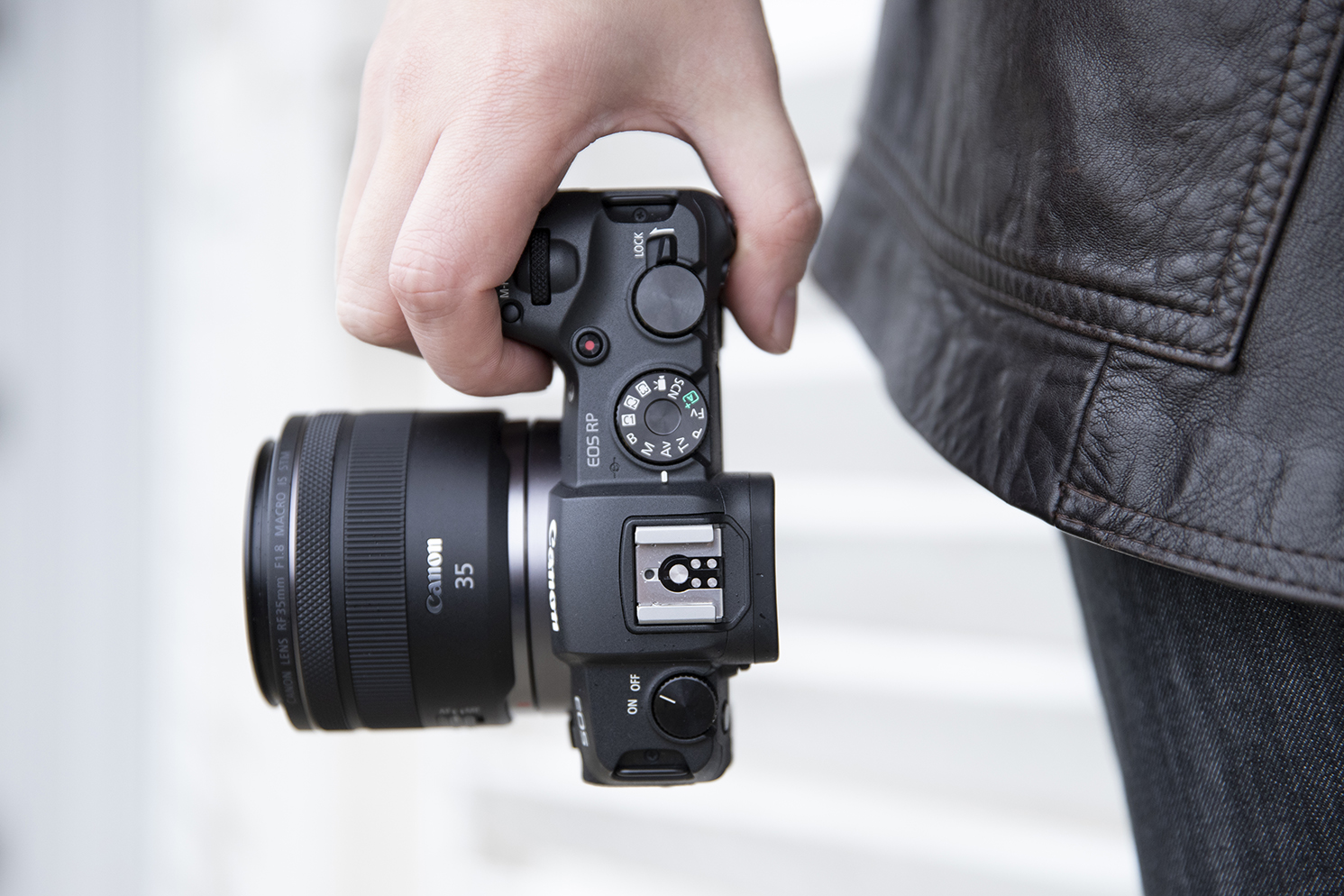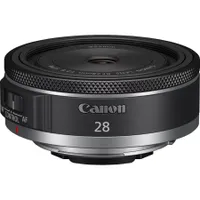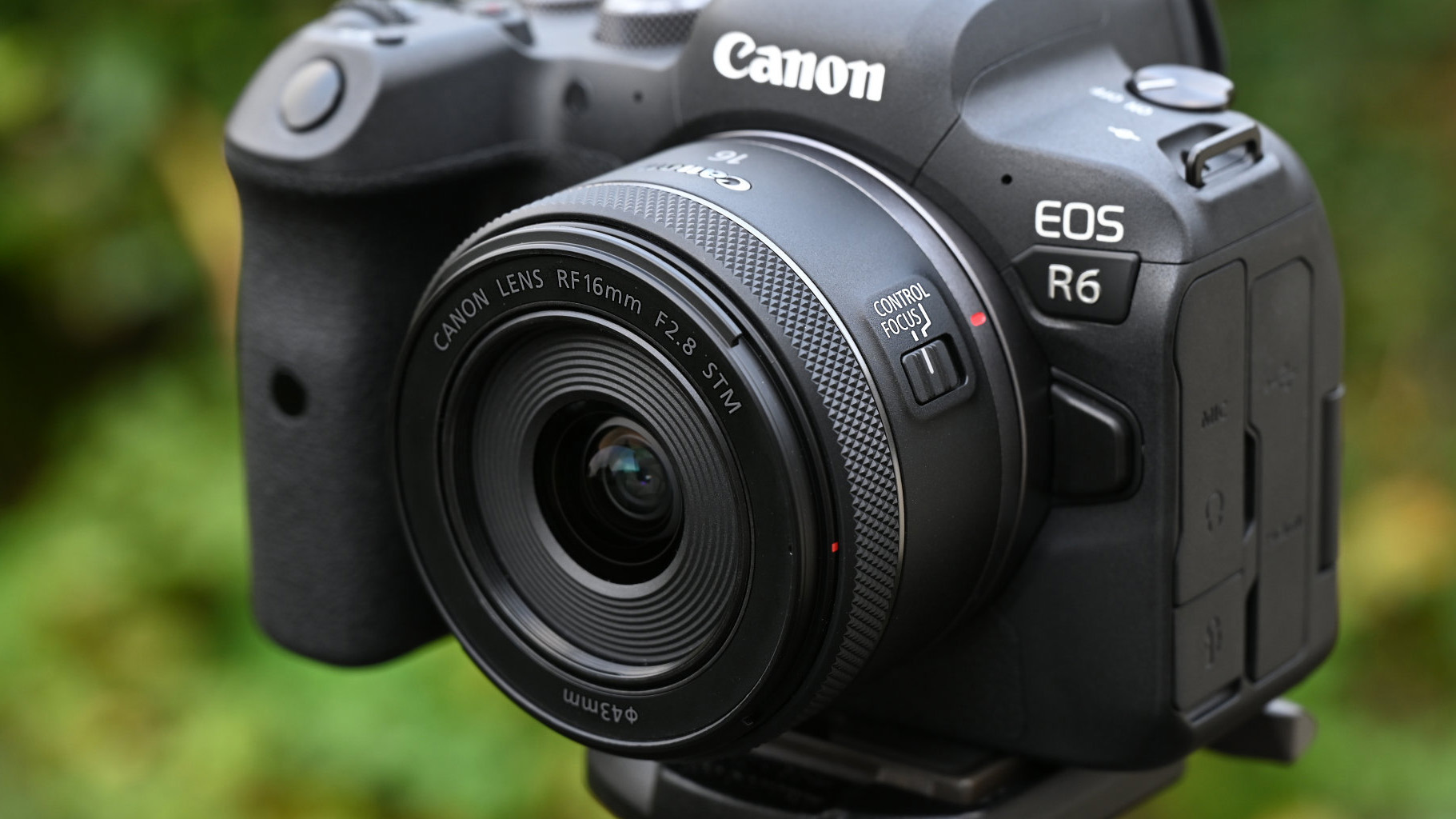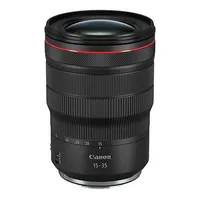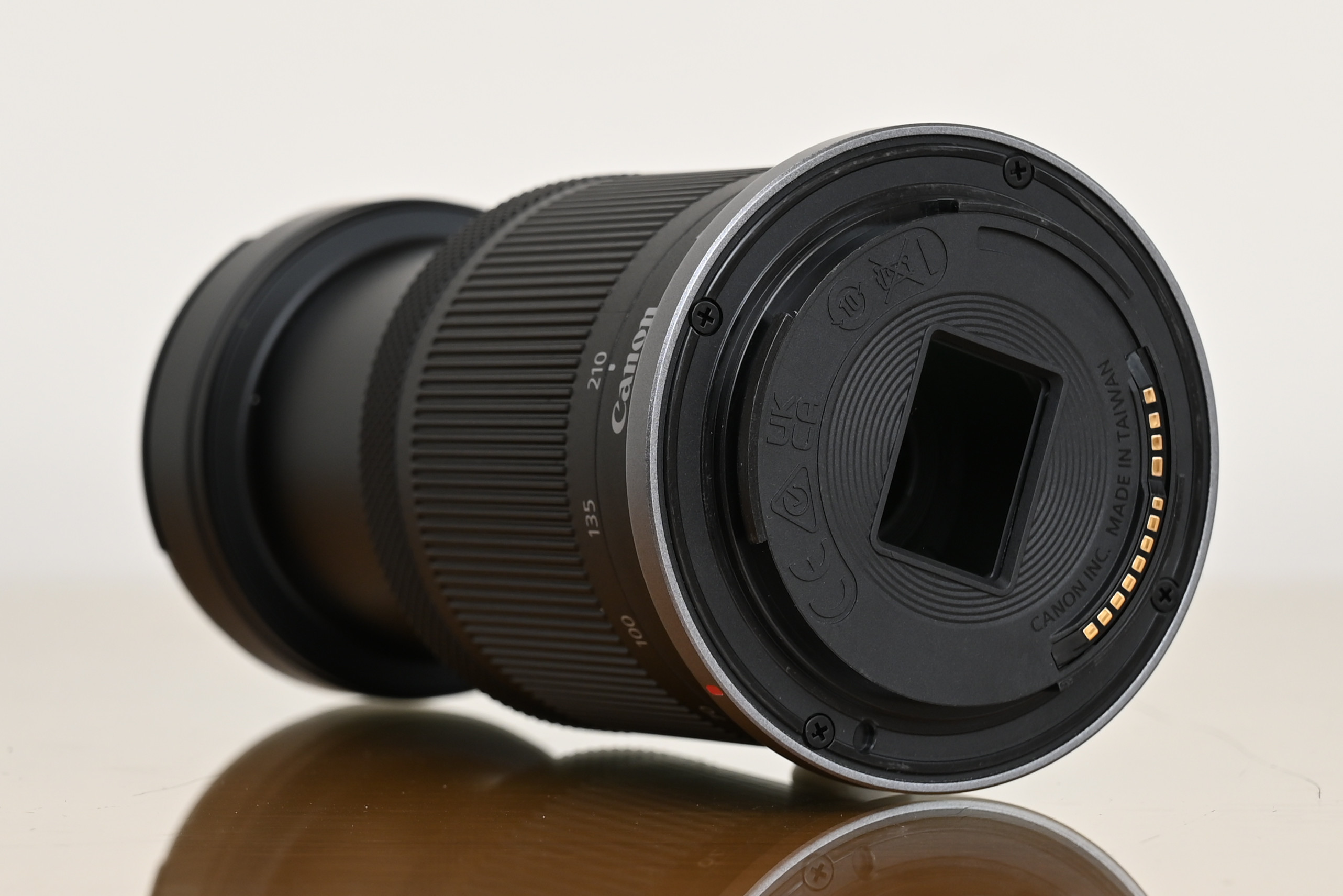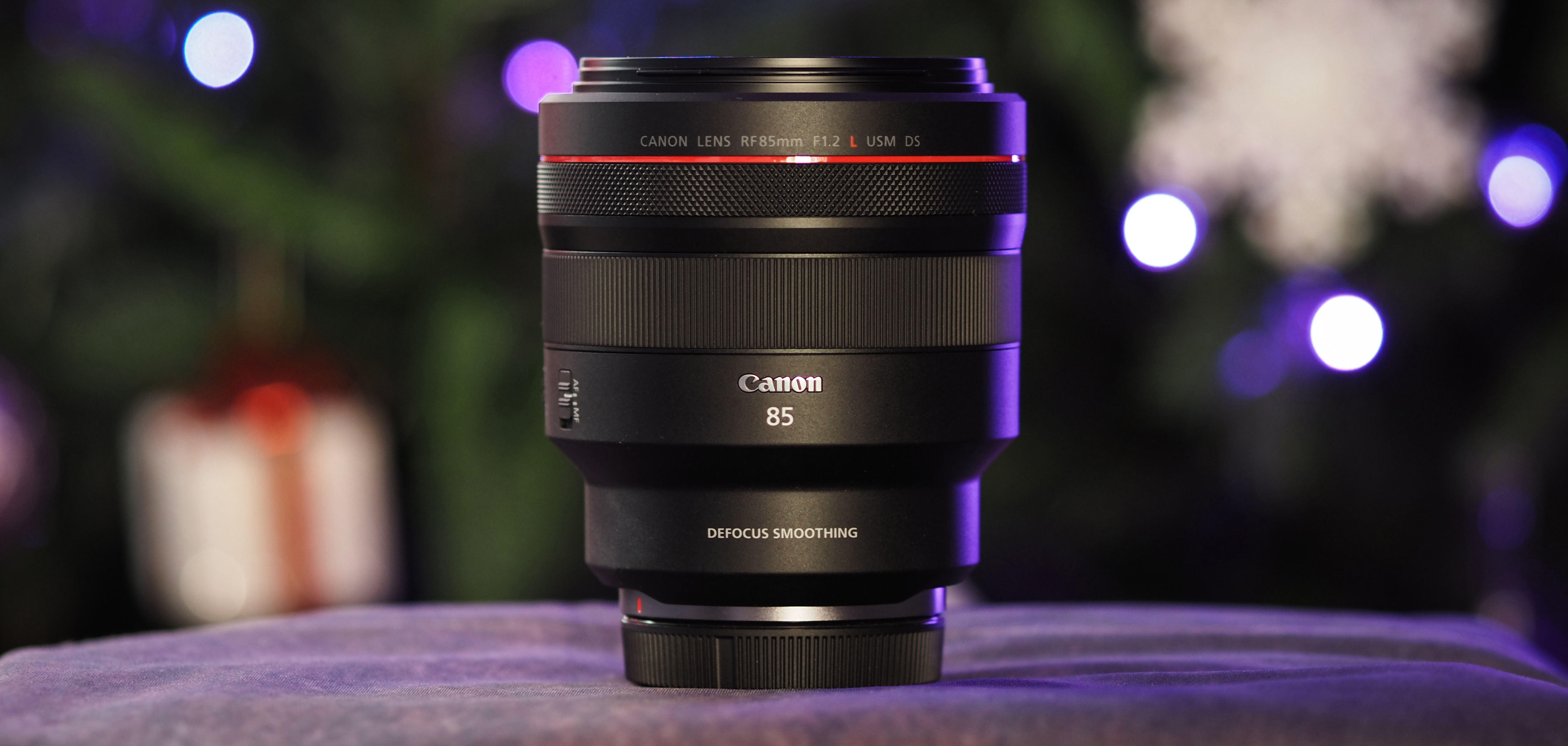The best Canon RF lenses in 2025: top lenses for the EOS R camera system
Check out the best Canon RF lenses for whatever you shoot, whether you're a full frame or APS-C shooter
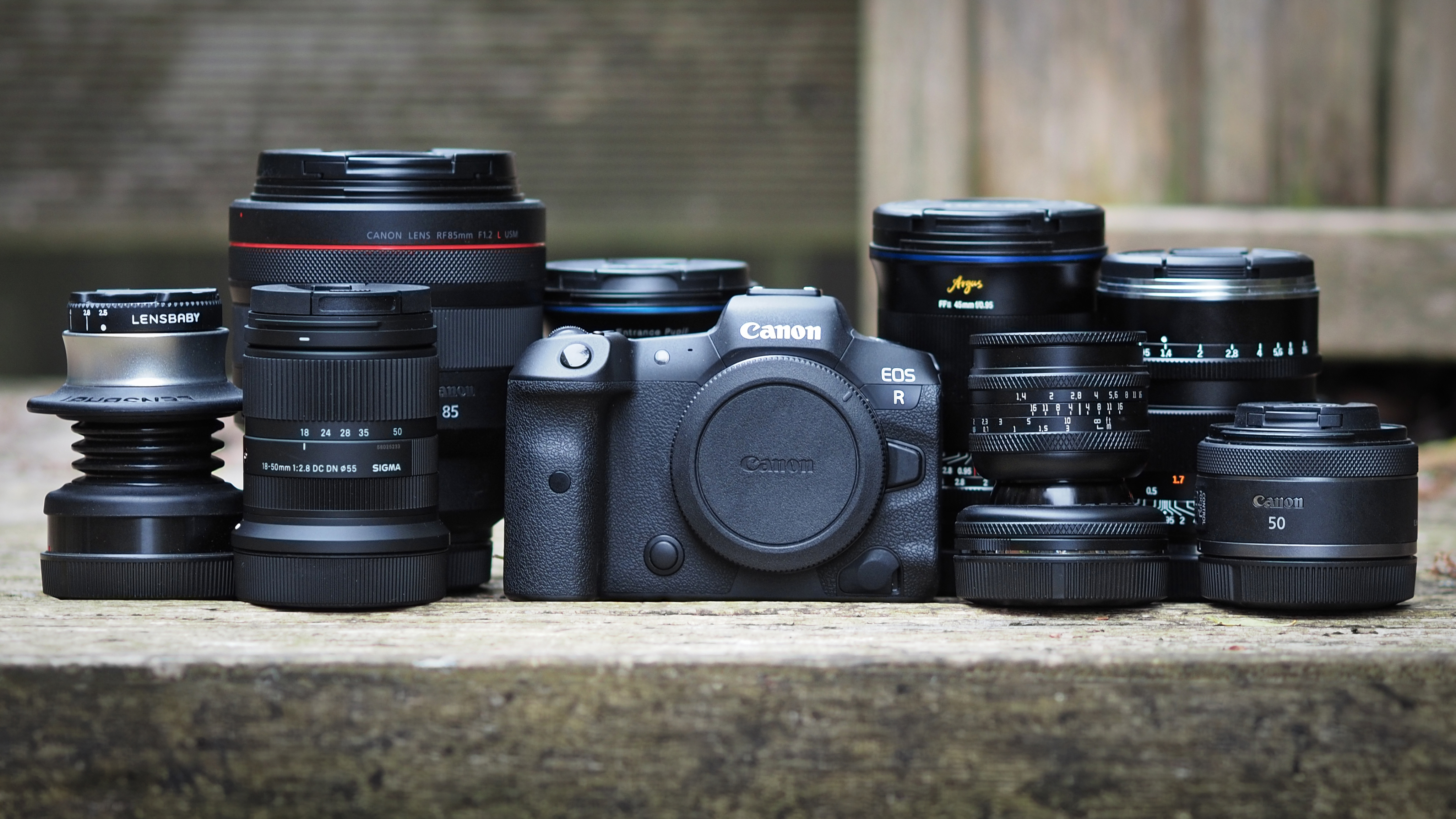
When I first assembled my list of the best Canon RF lenses back in 2018 (when the EOS R system launched) things looked very different! But what used to be a list dominated by premium-priced optics, with no options for APS-C cameras, now looks very different.
Today, the best Canon RF lenses comprise everything from top-tier L-series lenses to affordable third-party glass, with full-frame and APS-C both equally catered to. Especially now that Sigma and Tamron are licensed to make APS-C autofocus lenses!
(I've included the APS-C equivalent focal lengths for each suggestion, so you know how the lenses will perform on your camera. For more on the differences between RF and RF-S lenses, and whether you should choose full frame or APS-C optics for your camera, read the RF vs RF-S lenses section below.)
Personally, if I could only have one RF lens for my camera, it would be the Canon RF 50mm f/1.8 – the brilliant little nifty fifty that's tiny, affordable and takes great images. Everybody's needs are different, though, so here's my list of the best Canon RF lenses based on what you shoot. And since there's so much choice, I've included an honorable mention for every category!
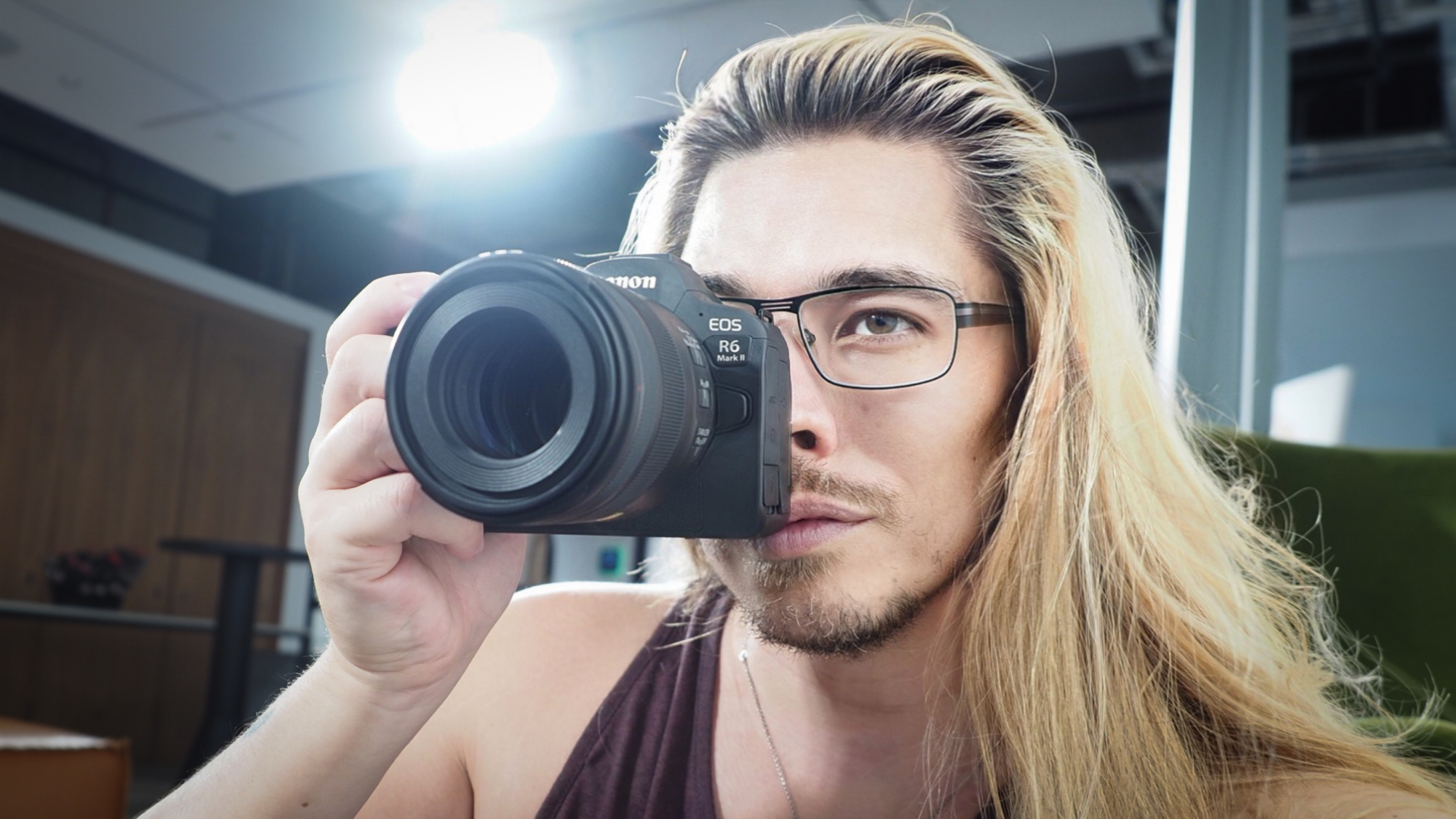
I was a day one adopter of the EOS R system, and I've used every RF lens that Canon has launched since then – as well as exotic and unusual optics from third-party brands. I've bought, sold and shot with the best Canon RF lenses for the past six years, so I can give you honest, first-hand experience of what's worth getting.
The Quick List
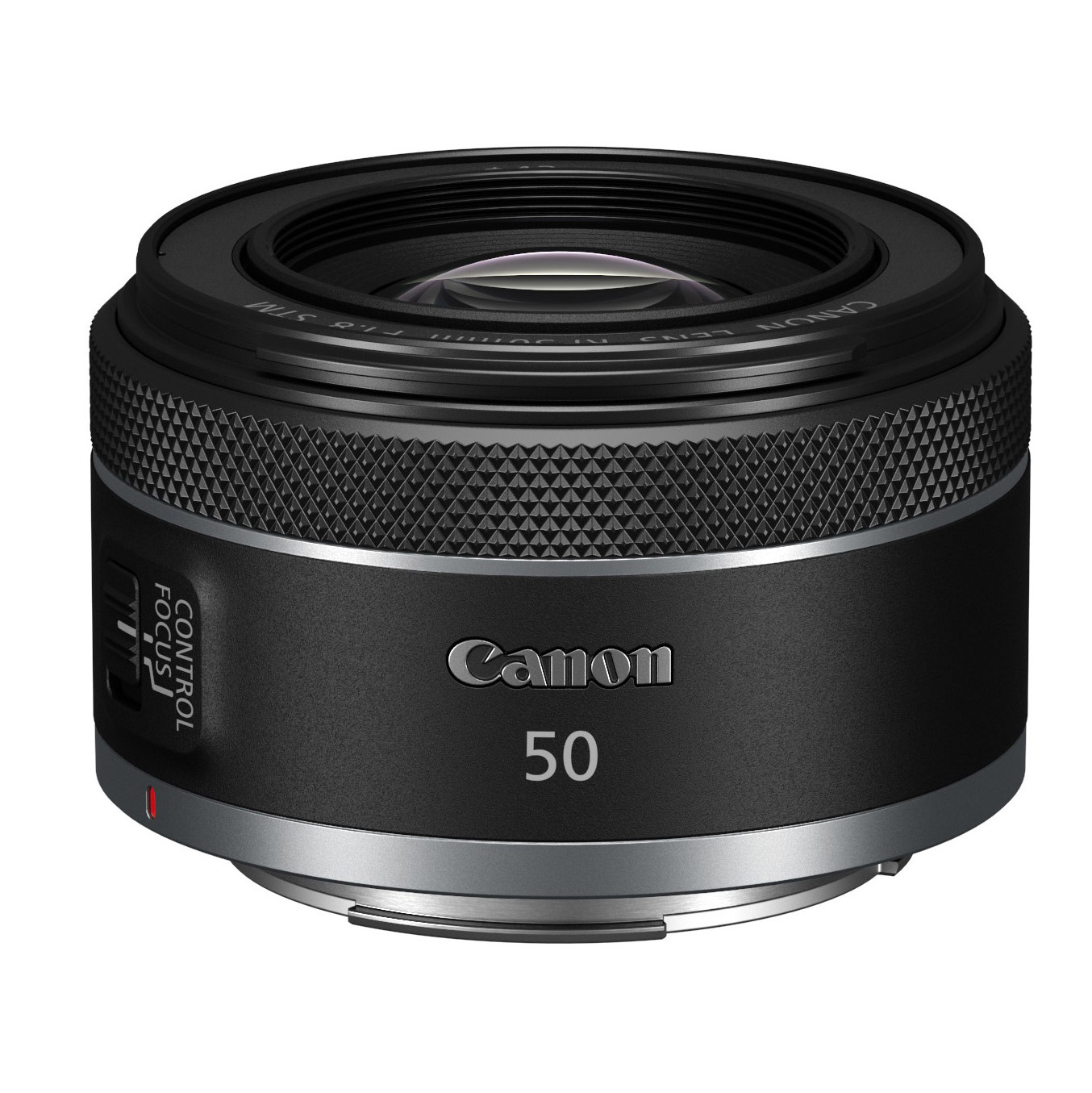
There's a reason that everyone says you should have a "nifty fifty" in your bag: they're cheap, have an all-purpose field of view that's good for everything, and they take great images!
Read more below
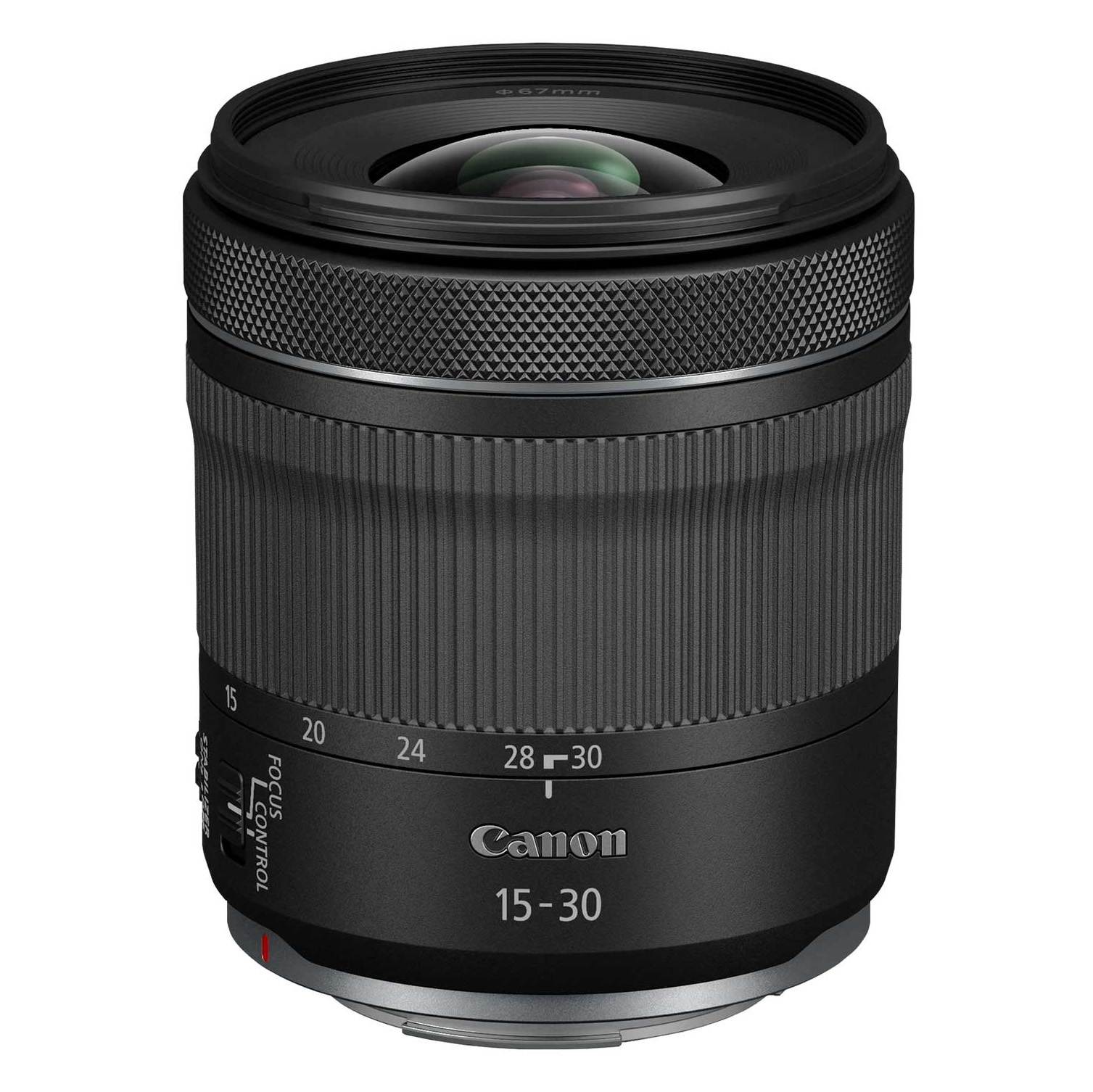
The most commonly needed lens for videography is a wide-angle – especially on APS-C bodies. The RF 15-30mm is nice and wide, and its variable aperture keeps the price down.
Read more below
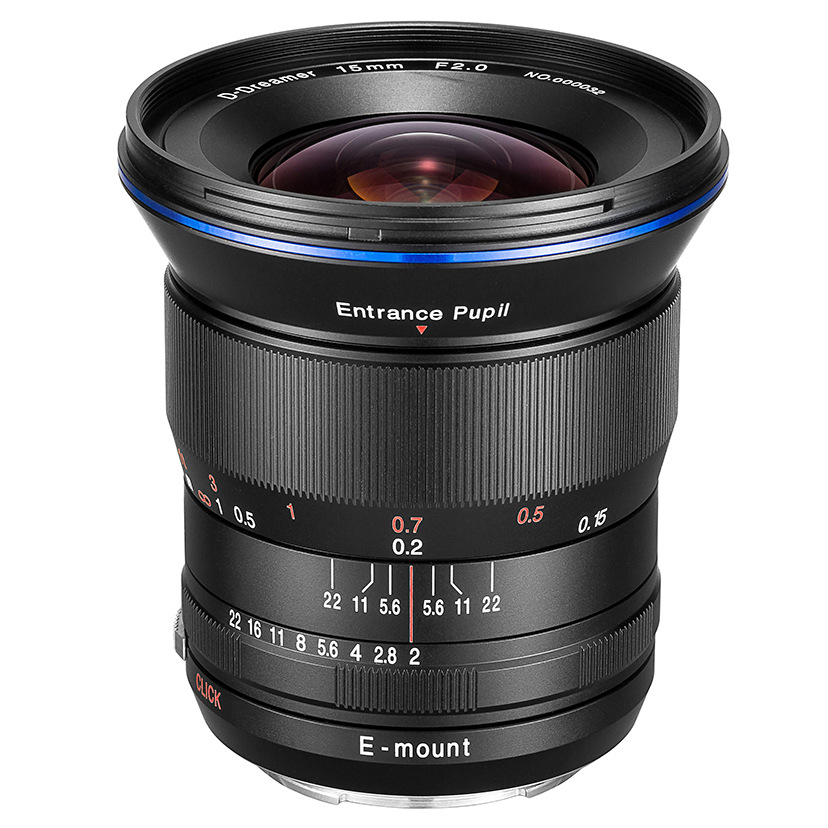
For typical astro you need a wide angle and a fast aperture – and autofocus doesn't matter. This is why I love Laowa's ultra-wide, ultra-fast, distortion-free manual lens!
Read more below
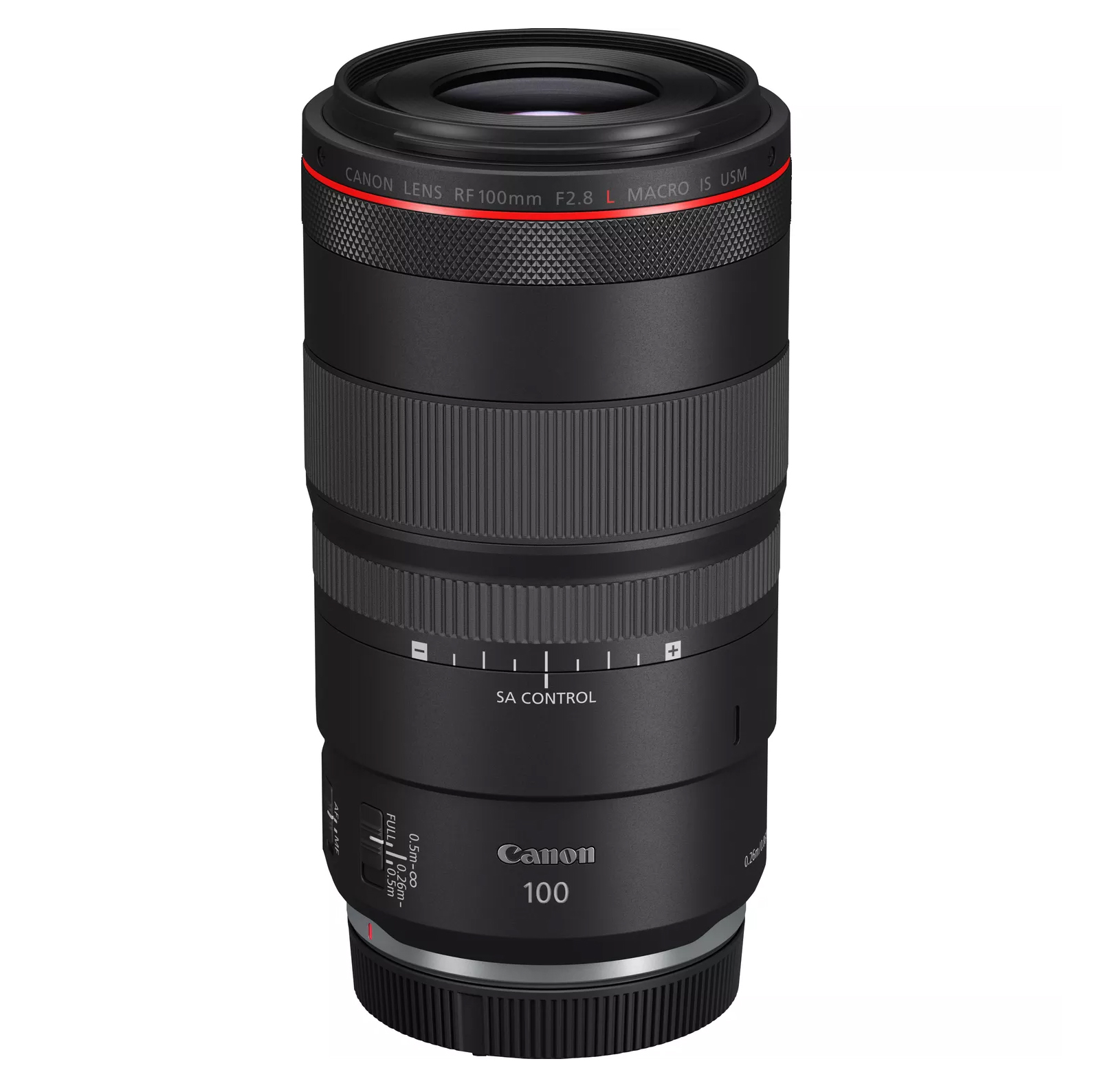
Canon's top-tier macro lens offers 1.4x magnification, up to 8 stops of image stabilization, ridiculously sharp results and a new bokeh control ring for additional creative effects!
Read more below
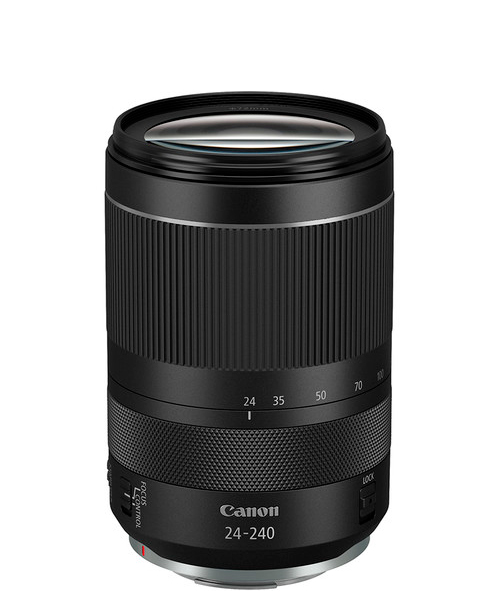
This all-in-one 10x superzoom lens covers all the bases for travel! Good for subjects that are close up, far away, shooting interiors, landscapes, portraits, even wildlife – perfect for travel.
Read more below
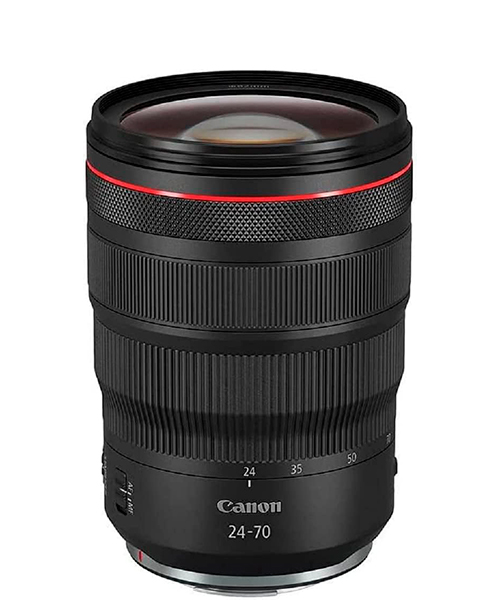
The perfect pro tool, its fast f/2.8 aperture enables you to blur backgrounds and work in low light, with stabilization and weather sealing to keep you shooting when things get tough.
Read more below

This "prime killer" is a groundbreaking lens for APS-C bodies, offering a 27-64mm equivalent f/1.8 lens that truly enables you to ditch a whole bunch of your prime lenses!
Read more below
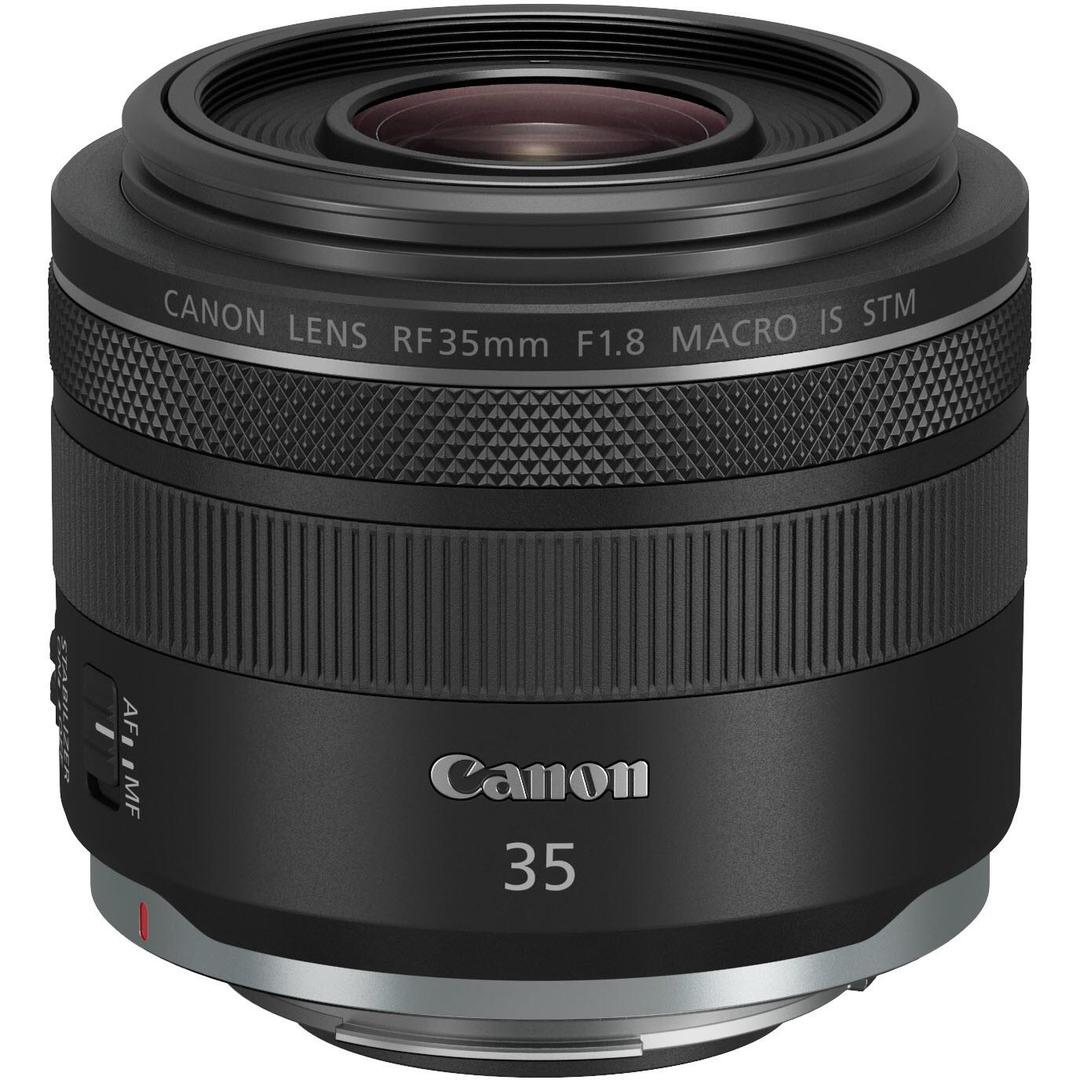
One of my favorite RF lenses, it offers a great focal length for street and reportage, it's stabilized, and it also offers light macro capability for those spontaneous close-up moments.
Read more below
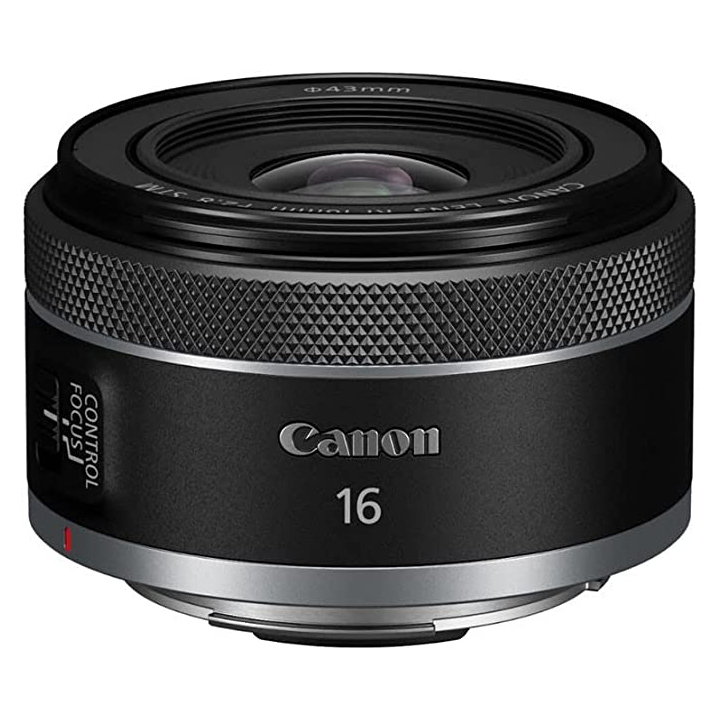
The widest prime lens in Canon's RF lineup, this is great for everything from vlogging to astrophotography – and it's both super compact and super affordable, making it irresistible!
Read more below
The best Canon RF lenses list
Why you can trust Digital Camera World
Best budget Canon RF lens
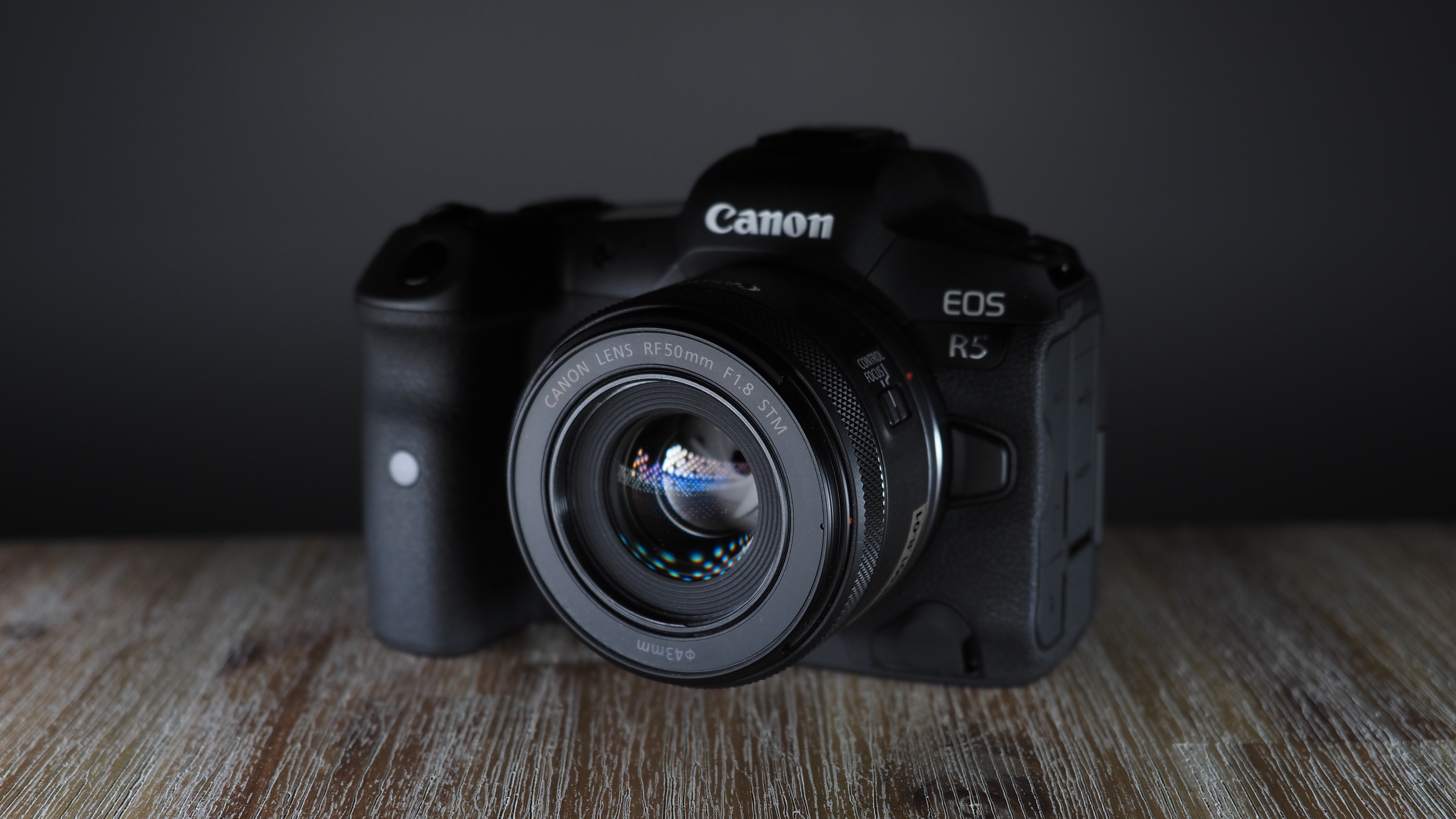
Specifications
Reasons to buy
Reasons to avoid
✅ You want bang for buck: This is Canon's ultimate price-to-performance lens. Quality punches well above its weight!
✅ You want an all-purpose lens: Close to the human eye's perspective, it's versatile enough for multiple disciplines.
❌ You need stabilization: If you want an image stabilized lens then look elsewhere, as this lacks any.
❌ You want weather sealing: This lens isn't moisture or dust resistant, so won't withstand challenging conditions.
🔎 Canon RF 50mm f/1.8 The nifty fifty is regarded as the one lens that everybody should own, and for good reason: low price, high quality, and shoots most things! ★★★★★
One of the cheapest Canon RF lenses is also one of the best! It's on the front of my camera so much that it's become my de facto body cap – but a body cap that takes amazing stills and video, with a versatile focal length that covers almost every eventuality, meaning my camera is always ready to pick up and start shooting.
You've probably heard that the "standard" 50mm field of view is similar to how the human eye sees the world, making this lens perfect for everyday shooting, travel and street photography, half-length portraiture and more.
(Bear in mind that, on an APS-C body, the focal length is 80mm – which makes it perform like a portrait lens rather than a standard lens.)
The fast f/1.8 aperture offers two big upsides. Firstly, it opens nice and wide to enable your camera to gather tons of light – meaning it's great for working in low light conditions.
And secondly, it delivers dreamily shallow depth of field for those blurry backgrounds and cinematic scenes.
I love that this is such a compact lens, too, as it enables me to keep my setup nice and small – ideal for my everyday carry camera, or when keeping your setup light and lean.
Read my full Canon RF 50mm f/1.8 STM review
Honorable mention
Lensbaby Spark 2.0 (APS-C 80mm)
Lensbaby lenses are love or hate, but this is one of my favorite creative tools. A manual tilt-shift lens, it comes standalone or with the Sweet 50 Optic – which creates areas of subtle or striking defocus with a "sweet spot" in focus. It's also an incredibly fun lens to use – the bellows system is even more satisfying to use than a manual lens!
Best Canon RF lens for video
Specifications
Reasons to buy
Reasons to avoid
✅ You want to shoot wide: Great for general coverage, establishing shots, and scenes with more than one person.
✅ You need stabilization: If you're shooting handheld, this lens offers up to 7 stops of shake compensation.
❌ You want background blur: Wide angles don't blur easy at the best of times, but especially not at these apertures.
❌ You shoot in rough weather: There's no weather sealing on this lens, so you'll need to keep it safe from the elements.
🔎 Canon RF 15-30mm f/4.5-6.3 If you don't want to fork out for the 15-35mm f/2.8, this covers the same wide and ultra-wide focal range. ★★★★½
Choosing the best lens for video depends, of course, on what it is you're actually filming.
However, an essential lens for every videographer's arsenal is a wide-angle zoom – something that's equally true for vloggers and content creators filming themselves.
A wide-angle zoom gives you plenty of flexibility to work in confined spaces, such as indoors, whether you're framing a solo subject, setting up a two-shot or capturing group or environmental shots.
The benefit of the RF 15-30mm (which is 24-48mm on an APS-C body) is that it gives you ultra-wide to wide coverage at an affordable price, thanks to that variable f/4.5-6.3 aperture.
This will limit your low light options and ability to render shallow depth of field, so if those are important then look to the Canon RF 15-35mm f/2.8L – though be aware that it's a pro lens with a pro price!
If you can work around those factors, I think this is a brilliant lens – especially with the image stabilization, which offers 5.5 stops of compensation on its own and jumps up to 7 stops when used on a camera with in-body stabilization.
Read our full Canon RF 15-30mm f/4.5-6.3 IS STM review
Honorable mention
Canon RF 24-105mm f/2.8L IS USM Z (APS-C 38-168mm)
It's way more expensive, but Canon literally designed this to be the best RF lens for video. A previously impossible lens, it's a true dream with a constant f/2.8 aperture across the entire range, superb sharpness, 5.5 stops of compensation (up to 8 with IBIS bodies), along with power zoom functionality and incredibly well-controlled focus breathing.
Best Canon RF lens for astrophotography
Specifications
Reasons to buy
Reasons to avoid
✅ You want a fast lens: With its f/2 aperture, this lens can gather tons of light for shooting dark night skies.
✅ You want minimal distortion: This is a near distortion-free optic, so you won't need to worry about those corners!
❌ You want autofocus: As a fully manual lens, there is no AF here – nor any EXIF data transmission for your settings.
❌ You need weather proofing: If you're shooting in the wet or cold, you might need a more robust lens.
🔎 Laowa 15mm f/2 Zero-D An ultra-wide lens that's this sharp and this distortion-free is remarkable enough – especially at its speedy f/2 maximum aperture. ★★★★½
For general-purpose astrophotography I love this third-party lens from Laowa – one of the most trusted third-party lens makers.
Since autofocus isn't necessary for astro work, the manual nature of this lens is actually a benefit – especially with such a long throw for pinpoint precision.
Although there we found a tiny bit of barrel distortion during our lab testing, this is pretty much the Zero-D ("zero-distortion") lens it's billed at – which is frankly incredible for the ultra-wide 15mm angle of view (which translates to 24mm on an APS-C camera). Especially one with such a wide aperture!
Obviously you need to gather as much light as possible when shooting astrophotography, which means you need the widest aperture you can get in order to get what little light is available in the night sky.
Not only does the Laowa's f/2 aperture gather huge amounts of light, it does so without sacrificing sharpness – this lens is outstanding even when shooting wide open, which is exactly what you want for astro work.
The aperture ring is de-clickable, too, should you want to use it for video!
Read my full Laowa 15mm f/2 Zero-D review
Honorable mention
Canon RF 28-70mm f/2L USM (APS-C 45-112mm)
My first thought for an alternative was the Canon RF 15-35mm f/2.8L, but since 15mm is covered by the Laowa I would point to the Canon RF 28-70mm f/2L. It's a big, heavy, expensive lens, but the focal length is very versatile and the constant f/2 aperture exceeds even the 24-70mm trinity lens – this is one of the showcase optics for the RF mount.
Best Canon RF macro lens
Specifications
Reasons to buy
Reasons to avoid
✅ You want better than 1:1 macro: Its 1:1.4 reproduction ratio captures subjects even bigger than life size.
✅ You want to shoot handheld: Not all macro can be done on a tripod – but with 8 stops of stabilization, it's no bother.
❌ Price is a factor: As one of Canon's specialist lenses, and an L-series one at that, this is a pricey piece of glass.
❌ You already have the EF version: There's no doubt this is a better lens, but the old DSLR one is perfectly adaptable.
🔎 Canon RF 100mm Macro This really is as good as it gets for macro. Pristine image quality, 1.4x magnification, epic stabilization, and even a creative effect dial. ★★★★★
The EOS R system is surprisingly well served for macro lenses, but the undisputed king is this: the RF 100mm f/2.8L from Canon, which replaces its legendary DSLR equivalent. In fact, it doesn't just replace it but upgrades it in every way.
Going above and beyond, this lens offers a reproduction ratio of 1:1.4 – meaning it will magnify your subjects 1.4x, making them bigger than life size to really fill your frame.
On top of that, it offers 5.5 stops of image stabilization – and jumps all the way to a crazy 8 stops when used in conjunction with an image-stabilized camera. I find this immensely useful because, while I use a tripod for macro whenever possible, sometimes I'm shooting a tiny subject handheld – and at 100mm (or 160mm on an APS-C camera) the stabilization really helps me out.
Also super-helpful here is the autofocus, which is both quick and quiet all the way to infinity – and as someone who has wrestled with the slow, clunky AF of other macro lenses, I can assure you this is not the norm!
Another bonus is that there is virtually zero focus breathing on this lens, making it superb for videography. And of course, the 100mm focal length is perfect for close-up portraiture as well as close-up macro work – so in effect, this lens serves triple duty.
A feature that some will love and others will hate is the SA Control dial. This enables you to dial in spherical aberration – a subtle or not-so-subtle soft focus effect, which in my opinion can look great for macro but should be used sensitively for portraits.
Read my full Canon RF 100mm f/2.8L Macro IS USM review
Honorable mention
Laowa 90mm f/2.8 2x Ultra Macro APO (APS-C 144mm)
While almost the same focal length, Laowa's lens offers 2x magnification to double the size of your subjects! As a much cheaper option, it lacks the autofocus, electronic aperture control and EXIF data offered by Canon, but it's supremely sharp across the entire frame even at small apertures – with pleasing background blur, as an added bonus.
Best Canon RF lens for travel
Specifications
Reasons to buy
Reasons to avoid
✅ You want a do-it-all lens: With its incredible 10x zoom range, you won't need to change your lens!
✅ You don't have a stabilized camera: With 5 stops of stabilization, your shots will stay steady – even at 240mm.
❌ You want speed: To accommodate the enormous zoom, the lens slows right down to f/7.1 at the long end.
❌ Image quality is top priority: It takes great pictures, but some optical compromises are necessary due to the range.
🔎 Canon RF 24-240mm An amazingly impressive lens that combines portability, performance and price. It's perfect for covering all eventualities while travelling. ★★★★★
With a massive 24-240mm range, this is the lens to go for if you want to carry just one RF lens in your bag – but you still want to be able to shoot things that are both close and far away, from portraits and interiors to landscapes, architecture and even some wildlife.
This isn't one of Canon's L-series lenses, so there's no weather sealing. And, like with all superzoom lenses, there is some compromise on image quality.
However, I was still impressed with the results – especially since in-camera corrections help to avoid major aberrations.
The lens also benefits from fast and accurate autofocus and 5 stops of image stabilization – something I definitely appreciate when shooting all the way at 240mm, especially at slightly slower shutter speeds when balancing the narrow apertures.
For anyone who likes to shoot with minimal kit instead of carrying multiple lenses around with you and having to keep changing them, this option may be very welcome indeed – and it won't weigh you down too much.
Read our full Canon RF 24-240mm f/4-6.3 IS USM review
Honorable mention
Canon RF 24-50mm f/4.5-6.3 IS STM (APS-C 38-80mm)
Want a smaller lens? Personally I'd go with a prime (the RF 35mm or RF 28mm) but if you want to keep the versatility of a zoom and you don't need crazy range, this 24-50mm lens is a good compromise. You won't be able to shoot subjects far away, but for landscapes and scenery and group shots it's absolutely perfect – and much cheaper.
Best Canon RF lens for wedding photography
Specifications
Reasons to buy
Reasons to avoid
✅ You need pro performance: Constant f/2.8 aperture, great image quality, weather sealing… this has it all!
✅ You want to shoot video: With zero focus breathing, this is also an excellent lens when it comes to videography.
❌ You're on a budget: All this performance comes at a premium price. The EF version is more wallet-friendly.
❌ You want 24-70mm on APS-C: There isn't an equivalent for RF yet, but check out the Canon EF-S 17-55mm f/2.8.
🔎 Canon RF 24-70mm f/2.8 It's not the optical juggernaut I expected, but it's still a monster performer – and essential for any pro, especially in wedding photography. ★★★★
The workhorse lens for most professionals, the 24-70mm Trinity lens is an absolute must-have for wedding photographers.
It's pricey, yes, but if you want clients to pay for your pictures then it's more than worth paying for its performance.
The 24-70mm (which is 38-112mm on an APS-C body) covers you all the way from wide-angle to portrait range – which is exactly what you need for wedding and event photography, where you need to quickly zoom from wide interior and group photos to intimate portraits of bridegrooms and guests.
This is where the fast, constant f/2.8 aperture comes into play (and into the cost) as you'll be able to work across the entire focal range even in challenging lighting conditions.
And, thanks to the weather sealing, in challenging weather conditions as well. So if it starts to rain, or if the wedding is on a sandy beach, you don't need to worry about your gear.
The 5 stops of image stabilization enable you to keep your shots steady, even at longer focal lengths and working with slow shutter speeds.
There's no focus breathing, either, making this a brilliant lens for hybrid shooting and dedicated videography.
Read my full Canon RF 24-70mm f/2.8L IS USM review
Honorable mention
Canon RF 85mm f/1.2L USM (APS-C 136mm)
If you've got the standard zoom covered, I'd recommend a good portrait lens – and they don't get better than this. It's razor-sharp, renders gorgeous background blur and can be used in minimal light. An alternative is the RF 85mm f/2 Macro, which is smaller, cheaper and also offers light macro capability – great for close-ups of rings and place settings.
Best third-party lens for Canon RF
Specifications
Reasons to buy
Reasons to avoid
✅ You want an ultra-fast zoom: An equivalent 27-64mm f/1.8 with weather sealing, this is a truly unique APS-C lens.
✅ You need all-weather performance: As a weather-sealed optic, you can keep shooting even in wet or dusty conditions.
❌ You need full-frame coverage: This RF-S lens is designed for APS-C sensors, so you get a cropped image on full frame.
❌ You shoot RAW: This glass relies on in-camera correction to control distortion, which only applies to your JPEG files.
🔎 Sigma 17-40mm f/1.8 DC | A If you have an APS-C camera this is pretty much an essential lens – but for full-frame shooters, bear in mind you will be shooting cropped images. ★★★★★
Going back well over a decade, Sigma launched the remarkable 18-35mm f/1.8 DC HSM | A lens for APS-C DSLRs. Fast-forward to today, and it has reinvented that groundbreaking lens for the mirrorless APS-C age. It's no exaggeration to say that this f/1.8 zoom can replace a number of prime lenses in your collection!
Yes, this is a dedicated APS-C lens – so while it can mount on full-frame cameras, it will only shoot in crop mode. It has been designed for Canon EOS R100, R50, R50 V, R10 and R7 owners – and with the 1.6x crop factor of those cameras, this 27-64mm effective zoom might be the only lens you need.
The constant f/1.8 aperture enables you to achieve stunning subject separation and keep shooting even in low light conditions. And, thanks to its weather sealing, you can keep shooting in inclement conditions as well.
It doesn't offer the pin-performance of the tippy-top primes, but for well under a grand this one lens does the job of the Canon RF 28mm f/2.8, RF 35mm f/1.8 and RF 50mm f/1.8 lens – and it gives you a faster aperture at the wide end, with even greater reach at the long end.
The only true downside with this lens is that it relies on in-camera corrections, rather than doing it optically. This is absolutely fine for JPEGs, but if you shoot RAW then you will notice some pretty pronounced barrelling and moderate pincushioning.
Read our full Sigma 17-40mm f/1.8 DC | A review
Honorable mention
Mitakon Speedmaster 50mm f/0.95 (APS-C 80mm)
The Canon RF 50mm f/1.2L is stunning, but it's way too expensive for most people. I'm a huge fan of this Zhongyi Optics lens that's even faster, at f/0.95 – and is thousands of dollars cheaper! You sacrifice sharpness to get that speed, but it's beautiful for portraiture – and it renders bokehlicious blur that looks like it was shot on a medium format lens.
Best Canon RF lens for street photography
Specifications
Reasons to buy
Reasons to avoid
✅ You want a second prime: After 50mm, a 35mm is most people's next step in the world of prime (non-zoom) lenses.
✅ You like close-ups: Although it's not a full macro lens, its magnification and close-focusing come in very useful.
❌ You need snappy AF, close up: Being really nitpicky, the focusing could be faster for shooting subjects up close.
❌ You want weather protection: If you want to shoot in all conditions, you might want a weather-sealed lens.
🔎 Canon RF 35mm f/1.8 Pocket friendly in terms of price and size, this super compact lens is packed with features, from stabilization to light macro capability. ★★★★½
For my money (literally, given that I bought one!) this is one of the best-value and most versatile lenses for the RF mount.
First and foremost, the 35mm focal length is perfect for street photography – and a 35mm f/1.8 is considered the classic lens for street shooting. While this is effectively 54mm on APS-C cameras, the "nifty fifty" is also a popular option for the genre.
It provides an entirely natural viewing perspective that also works well for landscape and architectural photography, and environmental portraits where you want to include the subject's surroundings.
The f/1.8 aperture enables faster shutter speeds in dim lighting, which is great for moody street scenes – and can even get you a bit of subject separation.
On top of that, the lens has a short 0.17m minimum focus distance that enables 0.5x macro shooting. That's not true macro (unlike the Canon RF 100mm above), but I always find this to be a great lens for capturing close-up details.
Add in a hybrid 5-stop stabilizer that corrects for x-y shift in addition to the more usual angular vibrations, and I think this is the most interesting of the more affordable RF lenses that Canon has produced.
Read my full Canon RF 35mm f/1.8 IS Macro STM lens review
Honorable mention
Canon RF 28mm f/2.8 STM (APS-C 45mm)
Do you want the teeniest, tiniest lens possible to keep your street setup as stealthy as possible? The RF 28mm is a pancake lens, and a perfect dance partner for similarly svelte cameras like the R50 and R100 – but is equally at home on bigger bodies as well. This is one of my absolute favorite lenses on the system, and one of the cheapest from Canon.
Best Canon RF wide-angle lens
Specifications
Reasons to buy
Reasons to avoid
✅ You're a vlogger: Or anyone who films themselves – this gives you the wide angle you need to fit in the frame!
✅ You want to stay small: As one of Canon's most tiny RF lenses, this is the perfect complement to a small body.
❌ You need stabilization: With no shake compensation of its own, you'll need a stabilized body or a gimbal.
❌ You're fussy about RAWs: A lot of in-camera magic is required, so uncorrected RAW files will be quite distorted.
🔎 Canon RF 16mm f/2.8 Another great pocket prime from Canon, the 16mm is a great little wide-angle option whether you're shooting on a full-frame or an APS-C body. ★★★★½
While Laowa's 15mm Zero-D (above) is a shade wider and faster, it's also a completely manual lens. So, for ultra-wide shooting on a prime lens with autofocus, Canon's 16mm f/2.8 is usually my go-to.
Even on an APS-C camera, where it becomes an effective 26mm, this is still a very wide lens – which makes it the weapon of choice for vloggers (who need wide angles for self-filming indoors) as well as anyone interested in shooting interiors, street scenes and landscapes.
The f/2.8 aperture is a real boon for the former, as indoor photography and videography often requires shooting in tricky lighting conditions. So the more light a lens can gather, the better!
Like the RF 50mm, this is another absolutely tiny lens – I can't quite believe how small and lightweight it is, again making it a great solution for solo vlogging and videography.
However, in order to achieve this, imagery requires a lot of in-camera corrections – the barrel distortion on RAW files is as huge as this lens is tiny.
This isn't a major problem, as JPEGs are automatically corrected and it's just a couple of clicks to fix in Photoshop, but still something worth bearing in mind if you shoot RAW.
Read our full Canon RF 16mm f/2.8 STM review
Honorable mention
Canon RF 15-35mm f/2.8L IS USM (APS-C 24-56mm)
For the ultimate in ultra-wide performance and versatility, you can't beat Canon's 15-35mm trinity lens. It's weather-sealed for all-purpose shooting, is virtually distortion-free despite the viewing angle, boasts 5 stops of image stabilization to keep shots steady… it's a powerful professional tool, through and through.
What's the difference between RF and RF-S lenses?
The first thing to consider is what kind of mirrorless camera you own. Do you have a full-frame body, like the Canon EOS R5 or R6 Mark II, or an APS-C body like the Canon EOS R50 or R7? Canon makes two kinds of mirrorless lenses: full-frame (RF) and APS-C (RF-S).
RF lenses are designed to cover a full-frame image sensor, but they can still be used on an APS-C body. And since an APS-C sensor only covers the most central part of the lens, you're getting the "fillet" in terms of sharpness and distortion.
RF-S lenses, meanwhile, only cover an APS-C sensor, but they can still be used on a full-frame camera – however, they can only be used in crop mode (which will use a smaller area, and so fewer pixels, of your sensor). As a result, I wouldn't really recommend using an RF-S lens on a full-frame body.
Either way, whatever lens you mount on an APS-body, you will need to multiply its focal length by 1.6x (the crop factor of the sensor) to find out the equivalent focal length on your camera. So an RF 50mm lens will perform like an 80mm lens on an APS-C camera (50 x 1.6 = 80), and an RF-S 10-18mm will behave like a 16-28.8mm (10/18 x 1.6 = 16/28.8). To make things easier, I've included the APS-C equivalent focal length for every recommendation on this list.
While a lot of third-party manufacturers have released RF lenses, Canon will not license anyone else to produce full-frame autofocus lenses or lenses with image stabilization. Plenty of third parties have produced fully manual "dumb" RF lenses, though, with no autofocus or electronic contacts to communicate with the camera.
How to choose the best Canon RF lenses
Choosing the right lenses depends entirely on what you shoot. For example, a fisheye lens is very much the right for some people but very much the wrong lens for others! The RF range features pretty much every kind of optics except (ironically) fisheyes and tilt-shifts, but otherwise if you need a specific lens you'll find it here.
While it's easy to be overwhelmed, and worried that you'll make the wrong choice, I'll just say that Canon doesn't make any bad lenses – so you really don't have to worry about buying a turkey in terms of optical performance.
Work out what it is you like to shoot, and how you like to shoot it. I prefer primes, so I would recommend the Canon RF 50mm f/1.8 as it's cheap, small, and it's versatile enough to shoot most subjects (the "nifty fifty" is the lens that you often hear "should be in everybody's bag"). If you're an APS-C user, the Canon RF 28mm f/2.8 is your 50mm equivalent. If you prefer the flexibility of zooms, go for a focal length appropriate to your subject matter.
In general, Canon's compact f/1.8 and f/2.8 primes are very affordable. For zooms, lenses with a higher and / or variable aperture number (such as f/4, or f/4.5-7.1) are more budget friendly than the L-series lenses with a signature red ring (and usually a constant aperture).
What is the most versatile lens for Canon RF?
The most versatile lens is the hitherto impossible Canon RF 24-105mm f/2.8L IS USM Z – a lens that has only become a reality thanks to the cutting-edge nature of the RF mount (previously, this focal length has only been possible with a slower f/4 aperture).
You can shoot almost anything on this one lens, which for some people replaces the need to carry all three "trinity lenses" as well as the most popular prime lenses. It's also a video-oriented optic with power zoom function and controlled focus breathing, making this arguably the first and ultimate hybrid lens.
What is the best RF lens for portraits?
As a portrait photographer, I recommend the Canon RF 85mm f/1.2L – which is the lens I personally bought, after spending a lot of time testing the available options!
A close second, to me, is the Canon RF 85mm f/1.2L DS lens that features Defocus Smoothing for truly beautiful backgrounds. However, you lose over a stop of light (due to the optical coatings used to achieve the effect) and the backgrounds look a little bit artificial (indeed, AI-generated) for my tastes.
The Canon RF 135mm f/1.8L is a great lens, and in many ways the 135mm focal length is more pleasing. But I find the working distance can be too challenging – both in terms of having enough space to shoot, and being able to connect and communicate with your subject.
Can you use Canon RF lenses on a Canon DSLR?
No, Canon RF lenses are not compatible with Canon EF-mount DSLRs, and there is no adapter available to make them compatible. However, the reverse is possible. You can use old EF lenses on Canon R system cameras if you use an EF-EOS-R adapter.
What is the difference between L lenses and regular Canon RF lenses?
Like with the EF lenses for its DSLRs, Canon employs an 'L' in the names of certain lenses to denote higher quality build and internal optics. L-series lenses can be identified by the red ring around the lens barrel. Most of the longer lenses are white rather than black.
L lenses tend to have larger and higher-quality glass elements and superior lens coatings for sharper images with fewer distortions. They have full weather sealing, come with lens hoods and can also have better autofocus control and image stabilization. They also tend to have faster apertures than standard Canon RF lenses.
How we test the best Canon RF lenses
As part of my evaluation process, I use every lens I test in my personal and professional work. The best way to see what an optic is capable of is to take it into a real-world shooting environment, so I put lenses through their paces on paid commissions or when shooting for my own portfolio.
I'm a portrait photographer by trade, so it's important to me that lenses perform well wide open – but it's equally important that they deliver the goods when stopped down. I shoot a lot of sport and wildlife, too, so I concentrate a lot on autofocus performance – including in challenging light. Equally, as someone who started with film cameras, I also consider a lens' ability to be focused manually!
Once I'm done using the lens in live shooting environments, I pass it into our lab manager Ben Andrews to be put through a suite of lab tests. As our lab manager, Ben's tests are carried out scientifically in controlled conditions using the Imatest testing suite, which consists of custom charts and analysis software that measures resolution in line widths/picture height – a measurement widely used in lens and camera testing.
The best camera deals, reviews, product advice, and unmissable photography news, direct to your inbox!

James has 25 years experience as a journalist, serving as the head of Digital Camera World for 7 of them. He started working in the photography industry in 2014, product testing and shooting ad campaigns for Olympus, as well as clients like Aston Martin Racing, Elinchrom and L'Oréal. An Olympus / OM System, Canon and Hasselblad shooter, he has a wealth of knowledge on cameras of all makes – and he loves instant cameras, too.
